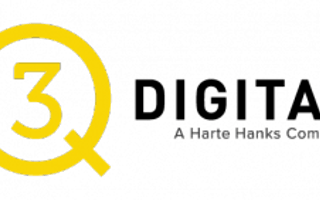By Blair Matsuura, Sr. Director of Client Services
Google Marketing Next is the annual conference where Google announces their new ad products and shares their vision for the future of digital advertising. This year, Google did not disappoint. The three main areas of focus were audiences (new audiences, better audiences, new insights), leveraging mobile to connect online and off line experiences, and connecting AdWords with Analytics 360 tools to give advertisers better insights on their customers and marketing investment.

A quick breakdown of the highlights:
New Ad Formats
AMP (Accelerated Mobile Pages) Search Ads and AMP ads on GDN
Last year, Google integrated AMP into the mobile SERP; this has been a great success for users and Google.
- AMPs load in under a second and dramatically improve user experience and reliability
- Google will begin testing AMP ads for search and on GDN. This is another good reason to migrate to an AMP site. If you are eligible, I recommend testing these new ad formats.
Promotion Extensions
Promotion extensions call out site promos and sales. The feature has been in beta for a few months and has been a great success for advertisers so far; it allows advertisers to save space in their ad copy so that they can focus on testing more value props.
Online to Offline
Google is continuing to focus on their online-to-offline product offering to bring customers from their mobile device to stores (and to track the customer journey).
- You can now serve location extensions and track in-store visits in YouTube.
- Promoted places on Google Maps give you another way to promote your business.
- In-store search in Shopping ads allow advertisers to feed in-store inventory into AdWords so users can see if (and where) a product is in stock.
Mobile Call Ads
Google is revamping the mobile click-to-call ad experience. They are adding location extensions and call outs and updating the ad unit to accommodate ETA character limits. They are also rolling out call bid adjustments to increase the number of times your call extension serves.
Call Center Insights
This product is aimed at improving the call experience. With the feature, the call center receives the campaign, the keyword, and the location of the customer. This gives the call center important context to better route and serve the customer.
New Audiences
YouTube Viewer Audience for RLSA
This new audience allows us to target YouTube viewers with bids and messaging in search.
Customer Patterns and Life Events for YouTube and Gmail
These audience types have shown strong performance on Facebook; I’m excited to test them out in these platforms.
RLSA+ Customer Match
This produces campaign-level audiences for RLSA. (Currently, RLSA audiences need to be applied at the ad group level.) With multiple lists and campaigns, setting up RLSA campaigns can be tedious and difficult to roll out at scale; this feature will improve set-up immediately.
Improved Customer Match Rate
This isn’t so much new as it is a (hopefully) vast improvement on an existing feature. Match rate for customer match is currently around 50% depending on product; the new customer match system will also ingest phone numbers, mailing addresses, and device ids. Google estimates that this will improve match rate by 35%. Google is also increasing the upload size limit (currently 500K) to support larger audiences.
Match rate is probably the biggest issue with customer match right now, so we are excited about the prospects for improvement. Look for the new customer match to roll out before end of year.
Tools
Google Attribution and Attribution 360
Google is releasing a free multi-touch attribution tool that plugs into AdWords and Google Analytics. It’s easy to set up and plugs directly into both platforms.
Multi-touch attribution gives advertisers a more accurate view of conversion data by analyzing multiple user paths and assigning value to each touch point. Combining Google Attribution conversion data with AdWords Conversion Optimizer is an ideal bid strategy to test.
Landing Page Testing with Google Optimize
Google Optimize is Google’s A/B testing tool that’s integrated with the Analytics 360 Suite; it’s now integrated directly into the AdWords UI. Advertisers can now easily create landing pages and split traffic directly in AdWords. Within AdWords, advertisers can create rules based off of campaign or keyword to route traffic to specific landing pages.
As with attribution, onboarding an A/B testing platform is one of the main barriers to entry for landing page testing. With this new integration, there’s no reason not to be testing landing pages and new user experiences for your paid traffic.
AdWords Integration with Surveys 360
This feature allows advertisers to survey audiences to better understand purchase intent or messaging – for example, you can ask users who click on a remarketing ad why they came back and integrate this data into promos, creative, etc.
All in all, these developments represent a collective step forward for advertisers focused on better attribution and audience understanding. As always, we recommend testing everything as soon as it’s available; keep an eye on this blog for insights and best practices as we dive in.






